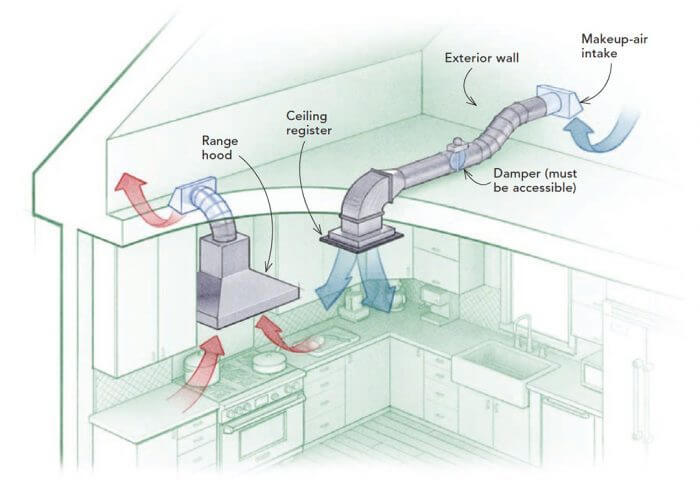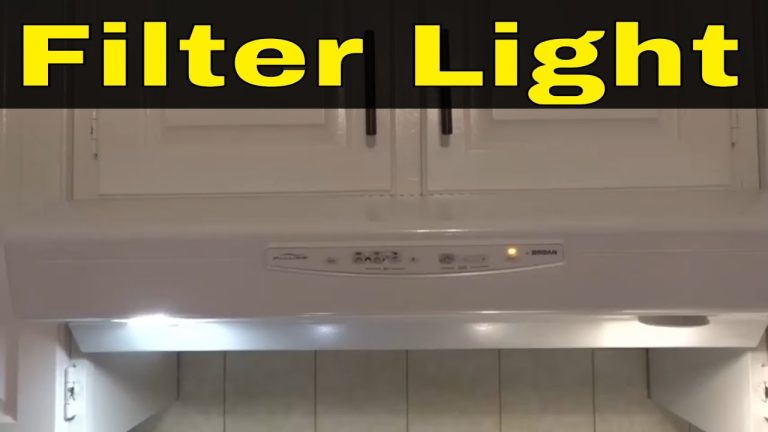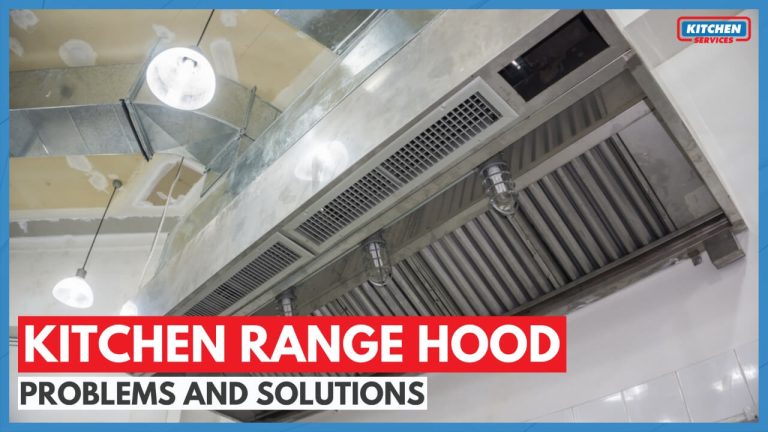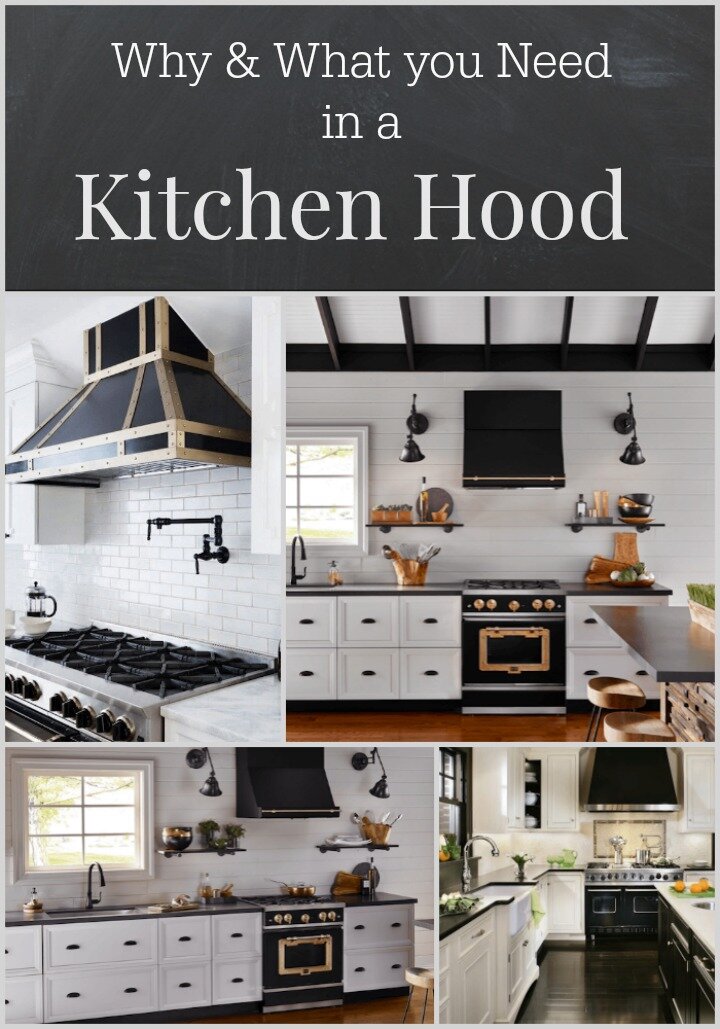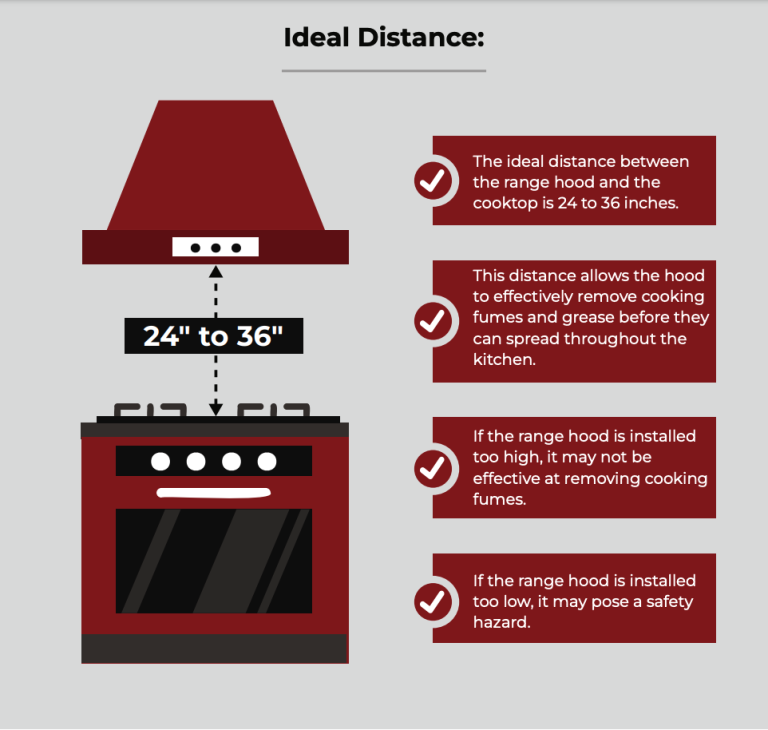A range hood vent can typically be up to 30 feet long for ducted installations. For optimal performance, keep the length under 20 feet whenever possible.
Installing a range hood vent requires careful consideration of its length and configuration. Proper venting ensures efficient air circulation, removing smoke, odors, and grease from your kitchen. A longer duct can reduce the hood’s effectiveness, while shorter ducts provide better airflow.
Factors like duct size, number of bends, and the type of venting system also play a role in overall performance. Homeowners must balance aesthetics and functionality to achieve the best results. Understanding these aspects will help you make informed choices for your kitchen ventilation needs.
Introduction To Range Hood Vents
Range hood vents play a crucial role in kitchens. Their main purpose is to remove smoke, odors, and grease. This helps keep the air clean and fresh.
Proper ventilation improves kitchen air quality. It reduces the risk of allergens and harmful pollutants. A good range hood vent can make cooking more enjoyable. It also protects your health and home.
Choosing the right length for a vent is important. Too long of a vent can reduce performance. Always check manufacturer guidelines for the best results.
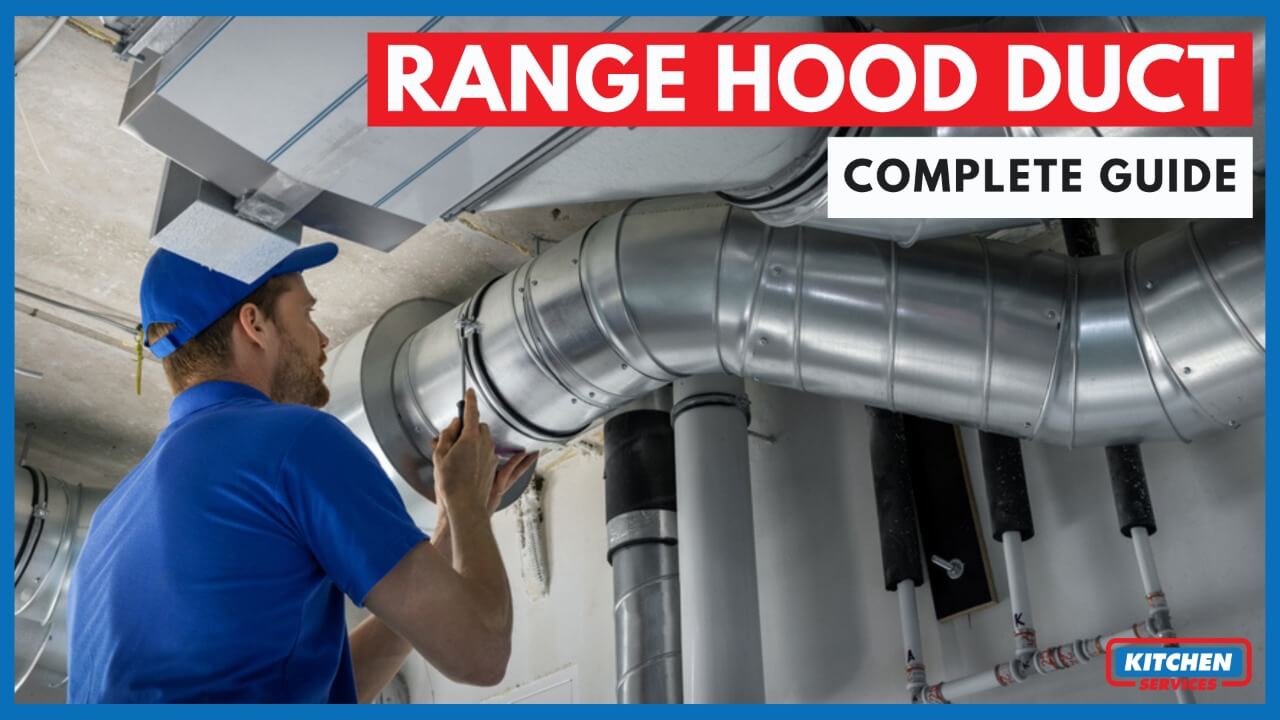
Credit: kitchen.services
Determining Vent Length
The length of a range hood vent affects its efficiency. Standard measurements often range from 3 to 6 feet for vertical vents. For horizontal vents, the length should not exceed 20 feet. Use smooth, straight ducting for best performance.
Custom vent considerations include the size of your kitchen and hood. Longer ducts may need additional bends. Each bend can reduce airflow. Always keep the vent path as straight as possible.
| Type of Vent | Standard Length | Maximum Length |
|---|---|---|
| Vertical | 3 to 6 feet | 15 feet |
| Horizontal | Up to 20 feet | 30 feet (with restrictions) |
Maximizing Vent Efficiency
Design factors greatly affect the efficiency of a range hood vent. The length of the duct plays a crucial role. Shorter ducts allow for better airflow and less resistance. Using smooth materials helps reduce friction. Avoid sharp bends in the ductwork to improve performance.
Regular maintenance is key for optimal operation. Clean the filters every month to ensure maximum airflow. Check for any blockages in the ducts. Inspect connections for any leaks that could reduce efficiency. Replace worn-out parts promptly to keep the system running smoothly.
Impact Of Long Vents On Performance
Long vents can greatly affect airflow. A vent that is too long may reduce efficiency. This is because air has to travel a longer distance. The longer the distance, the weaker the airflow becomes.
Airflow dynamics change with longer vents. Obstructions in the vent can cause further issues. These obstructions can be bends or turns in the duct. Each bend can slow down airflow even more.
Potential complications include increased noise levels. As air struggles to move, it can create loud sounds. Poor air quality can also occur. This happens when air cannot effectively escape. Proper planning is key for better results.
Material Choices For Long Vents
Choosing the right material for long range hood vents is crucial. Durability is key for vents. Stainless steel is strong and lasts long. Copper is beautiful but can corrode over time. Plastic is lightweight but may not hold up well.
Thermal properties also matter. Vents should handle high heat without damage. Some materials can warp or melt. Stainless steel is heat resistant and ideal for cooking areas. Copper can handle heat but needs care. Always check the manufacturer’s guidelines for best results.

Credit: diy.stackexchange.com
Installation Best Practices
Choosing between a professional installation and DIY can affect your results. A professional ensures proper setup. They have the right tools and experience. This can save time and avoid mistakes.
On the other hand, DIY installation can be cost-effective. Research and planning are key to success. Make sure to follow local codes and guidelines.
Safety is very important. Always turn off the power before starting any work. Use protective gear, like gloves and goggles. Keep a fire extinguisher nearby during installation.
Check for any potential hazards in your area. Ensure proper ventilation is available. This will help keep your home safe and healthy.
Common Mistakes To Avoid
Many people make common mistakes with range hood vents. One major issue is incorrect sizing. A hood that is too small won’t remove smoke and odors well. A hood that is too big can be noisy and waste energy.
Another mistake is inadequate sealing. Poorly sealed ducts can cause air leaks. This reduces the hood’s efficiency. Make sure all connections are tight. Use duct tape or clamps for a secure fit.
Choosing the right size and sealing properly can greatly improve your range hood’s performance.

Credit: www.wikihow.com
Advanced Venting Solutions
Inline blowers are a smart option for venting your range hood. They sit inside the ductwork. This design keeps noise levels low while improving airflow. They are perfect for long duct runs.
External blowers are another choice. These units mount outside your home. They provide powerful ventilation and can handle longer duct lengths. This option reduces noise inside the kitchen.
| Type | Location | Benefits |
|---|---|---|
| Inline Blowers | Inside ductwork | Quiet, efficient airflow |
| External Blowers | Outside home | Powerful, less noise inside |
Regulatory Compliance And Building Codes
Local guidelines for range hood venting can vary by city or state. Always check local building codes for specific requirements. Some areas may have maximum length limits for vent pipes. This is to ensure proper airflow and safety.
National standards also provide rules for range hood installation. The International Mechanical Code (IMC) and the National Fire Protection Association (NFPA) set important guidelines. These standards help prevent fire hazards and ensure efficient ventilation. Following these guidelines can promote safety in your home.
Conclusion: Balancing Length And Efficiency
Range hood vents are crucial for effective kitchen ventilation. They help remove smoke, odors, and grease. The length of a vent affects its efficiency. Generally, a vent should not exceed 30 feet. Each bend reduces airflow by 5 feet. Keeping the vent straight helps maintain performance.
Consider these key points:
- Shorter vents work better.
- Avoid too many bends.
- Use high-quality materials.
- Regular maintenance is essential.
For best results, choose a vent length that fits your kitchen. A professional can help determine the right setup. This ensures proper airflow and optimal performance.
Frequently Asked Questions
How Long Can A Range Hood Vent Be?
The maximum length for a range hood vent typically ranges from 20 to 30 feet. This length depends on the type of venting system and the manufacturer’s specifications. Longer ducts may require additional considerations, like using larger duct sizes or adding booster fans for effective airflow.
What Factors Affect Range Hood Vent Length?
Several factors impact the vent length, including duct size, number of bends, and the type of range hood. Each of these elements can reduce airflow efficiency. It’s essential to consult your manufacturer’s guidelines to optimize vent length for best performance.
Can I Extend My Range Hood Vent?
Yes, you can extend your range hood vent, but it requires careful planning. Ensure you’re adhering to local codes and manufacturer specifications. It’s advisable to use smooth, straight ducting to maintain airflow efficiency. Consult with a professional if you’re unsure about the installation.
What Happens If Venting Is Too Long?
If the venting is too long, it can lead to reduced airflow and efficiency. This may result in poor smoke and odor removal. Additionally, it can put extra strain on the range hood, potentially leading to motor failure. Always follow the recommended vent length guidelines.
Conclusion
Choosing the right length for your range hood vent is crucial for effective ventilation. Shorter ducts often work better for performance. Always consider your kitchen layout and venting needs. Proper installation will enhance air quality and improve your cooking experience.
Invest time in planning for the best results. Happy cooking!
